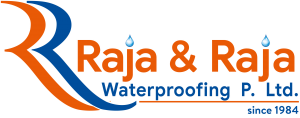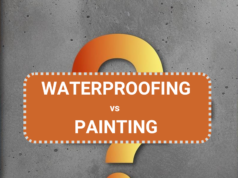About Dampness:
The word Damp means moisture diffused on the solid surface through condensation or air diffusion turning the surface to feel Slightly wet. Also, it could be simply termed as Slightly Wet.
The word damp is generally associated with Fabric & Construction.
We often say that,”Clothes are damp” also, “Walls and Ceilings are damp“.
In this article, we would further discuss about the dampness in a construction structure.
The dampness in a structure is presence of unwanted moisture in the building structure because of the condensation or water intrusion due from above grade structure or below grade structure.
The popular and most common damp problems in a building structure are caused because of Condensation, seepage, rain penetration to above grade structure and capillary actions (rising dampness) to below grade structures.
The presence of the dampness invites the growth of the various fungi & moss as already discussed in past article and also lead to respiratory problems like asthma and COPD (chronic obstructive pulmonary disease).
About Damp Proofing / Damp Protection:
Damp Proofing in a construction is a moisture control treatment, which is undertaken to prevent the dampness from being absorbed through walls and floors of a structure by making the surface impervious to damp and avoiding the passage of moisture to the interior spaces by using various damp course which are also called as Damp protection Treatments.
As per ASTM (american society for testing and materials) damp proofing is defined as a material which resists the passage of water with no hydrostatic pressure and waterproof as a treatment which resists the passage or water under pressure.
Also Read: Symptoms of Leakage & Seepage
About Damp Proofing Course (DPC):
Damp proofing course are the construction treatments to structure to control the moisture ingress from walls and floor to interior of the structure.
Damp proofing course are crucial for the protection of your health and property both.
DPC are a once in a life time (long term) solution to the water and moisture ingress through walls, floors and foundation. As the dampness present in the structure cause the damage to the property by corroding the structural reinforcement like steel and also it decays the timber used for door and window framings.
DPC is generally provided at plinth level to restrict the passage of the moisture from ground to transmit up by capillary actions within the building structure. Also, the DPC is used at roofs and floor to restrict the passage of the water in any form.
What qualifies for the product to be used for Damp Proofing Course?
Following are the properties of the product that qualifies themselves for the DPC:
- Imperviousness
The product used for DPC shall be impervious (shall not allow passage of water in any of forms). - Durability
The product used for DPC shall be durable & strong enough to sustain the live loads and dead loads without any self damage. - Stability
The product used for DPC shall not expand or contract; in short it shall be dimension stable. - Free from Alkalies
The product used for DPC shall be free from salts / alkalies of the chlorides, nitrates and sulphates.
Classification of Damp Proofing Course (DPC) materials:
- Flexible Materials (Bitumen, Plastic Sheets, Virgin Polythene Sheets)
- Semi Rigid Materials (Mastic Asphalt, Combination of Sheets of materials in layers)
- Rigid Materials (First Class Bricks, Stones, Slates, Cement / Concrete Mortar, Metals Sheets)
- DPC Grouts (Cement Slurry, Acrylic based cement slurry, polymers)





